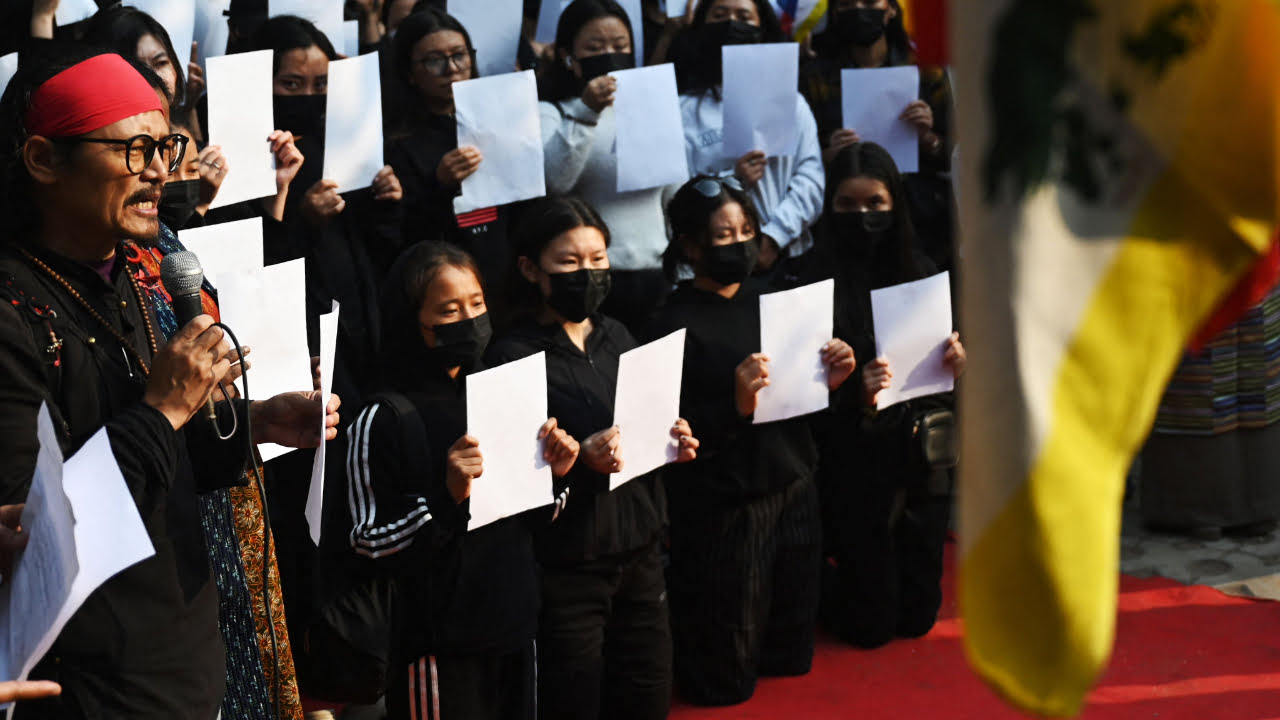Chinese authorities arrested four young Tibetan women from Dhartsedho County in eastern Tibet for allegedly taking part in a protest against the Chinese government’s “zero-covid policy” restrictions in the city of Chengdu in recent days, as part of a massive demonstration in 16 different cities across China.
According to a reliable source, four young Tibetan women, Zamkar, Dechen, Kalsang Dolma and Delha, from Dhartsedho County, have been arrested by Chinese security police on accusations of participating in a large number of protests against the lockdown and restrictions imposed by the Chinese government as part of its “zero-covid policy” in Chengdu, as well as in other cities in the region.
“Chinese police have arrested four Tibetan women, Zamkar, Dechen, Kalsang Dolma and Delha, on December 5, 2022, for allegedly participating in a peaceful demonstration against the “zero covid” policy in Sichuan’s capital Chengdu,” a source told TPI, while citing the information from Tibet.
According to the source, the four young Tibetan women studied up to high school in Dhartsedho County, then went to work in Chengdu and worked in a hotel in the Jinniu district of Chengdu city, before being arrested by the Chinese authorities.
Due to the restrictions of the “zero-covid policy” in Chengdu and other cities in China, the hotels closed and they were left without work for some months in Chengdu. The Chinese authorities accused them of participating in a large number of protests against the Chinese government’s “zero-covid policy” restrictions in Chengdu, and arrested them on December 5, 2022.
Zamkar halis from Serlong village in Dhartsedho County, 26 years old and Kalsang Dolma, 28 years old, Dechen and Delha are also from Dhartsedho County, they all studied until high school in Dhartsedho County and then went to work in Chengdu.
According to reports, Chinese authorities have arrested peaceful protesters in universities and cities for their participation in peaceful demonstrations in the 16 cities in different provinces, including a young Tibetan woman named Tsewang Lhamo,from Lhasa, the Capital of Tibet, who was studying at Nanjing Communication University in China.
University students and the public in China protested against the restrictions of “zero-covid policy” imposed by the Chinese President Xi Jinping, with some protests calling for “the Communist Party and Xi Jinping to step down”. The protests took place on 25, 26, 27 and 28 of November 2022 in about 16 different cities, including Beijing, Shanghai, Zhengzhou, Tianjin, Gansu, Chongqing, Chengdu, East Turkestan (Ch:Xinjiang), Anhui and Qinghai, etc. Many of the peaceful protesters were arrested, beaten and treated harshly. In some places, the Chinese authorities even openly shoot at protesters and police vehicles run over protesters.
The demonstrators chanted slogans such as “freedom, freedom of speech, freedom of the press, human rights in China, end of dictatorship, democracy, we need democracy, let’s oppose dictatorship, don’t want a system for life, don’t allow changes to the party constitution, China doesn’t need an emperor” etc.
China-Tibet: The one-thing you need to know
Over the past 70 decades, there has been ongoing political repression, social discrimination, economic marginalization, environmental destruction, and cultural assimilation, particularly due to Chinese migration to Tibet which is fueling intense resentment among the people of occupied Tibet.
The communist-totalitarian state of China began its invasion of Tibet in 1949, reaching complete occupation of the country in 1959. Since that time, more than 1.2 million people, 20% of the nation’s population of six million, have died as a direct result of China’s invasion and occupation. In addition, over 99% of Tibet’s six thousand religious monasteries, temples, and shrines, have been looted or decimated resulting in the destruction of hundreds of thousands of sacred Buddhist scriptures.
Until 1949, Tibet was an independent Buddhist nation in the Himalayas which had little contact with the rest of the world. It existed as a rich cultural storehouse of the Mahayana and Vajrayana teachings of Buddhism. Religion was a unifying theme among the Tibetans — as was their own language, literature, art, and world view developed by living at high altitudes, under harsh conditions, in a balance with their environment.
Source: The Tibet Post










